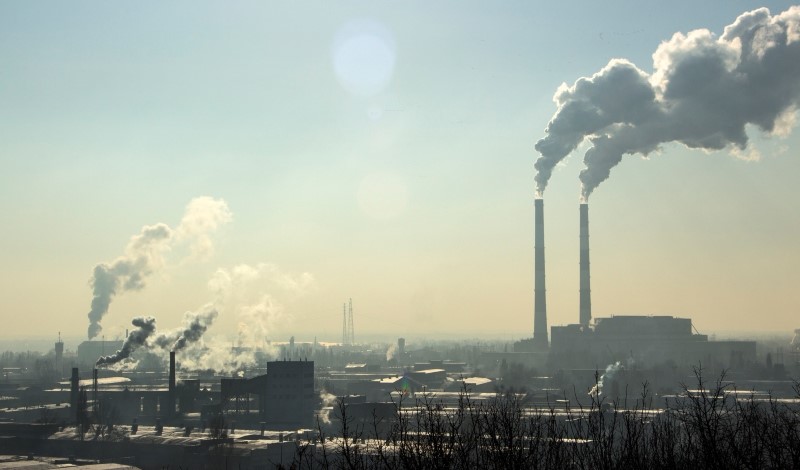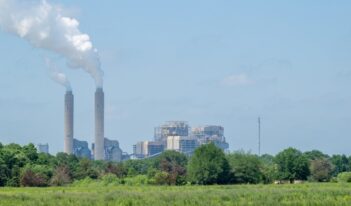
Scholar argues that technical assistance grants can spur meaningful involvement in permit decisions.
The U.S. Environmental Protection Agency (EPA), in conjunction with state and local governments, processes thousands of air pollution permits each year. These permits dictate the acceptable levels of pollution a facility may emit into its surrounding community—a community that may not have a meaningful say in the government’s decision.
Although the Clean Air Act technically calls for these permit decisions to be open to public comment, affected communities often lack the technical expertise to participate in this process. To promote environmental justice, these communities should receive technical advisory assistance to support their ability to advocate for greater pollution control, argues Jonathan Skinner-Thompson, an associate professor at University of Colorado Law School, in a recent article.
EPA defines environmental justice as the “fair treatment and meaningful involvement of all people” through each stage of environmental regulation. Skinner-Thompson explains that meaningful involvement requires decisionmakers to seek out and consider the concerns of groups who may be affected by environmental regulation, thereby giving these affected groups the opportunity to influence regulatory decisions.
Clean Air Act permit decisions, Skinner-Thompson emphasizes, “legalize acceptable levels of pollution” and may have long-term effects on surrounding communities. Indeed, air pollution can lead to premature death and a variety of heart and respiratory issues. Skinner-Thompson also notes that these adverse impacts fall disproportionately on “low-income communities and communities of color.”
Before EPA approves a permit, the affected community members may voice their concerns during a public comment period, or, once approved, challenge the permit in court. Skinner-Thompson observes, however, that permitting provisions are laden with complex terminology and findings based on scientific models. Skinner-Thompson asserts that these factors make it difficult for the layperson to understand and contribute relevant commentary that can influence the agency’s decision.
Raising specific concerns during the public comment period is important because it impacts whether a court will review a legal challenge to an agency’s final decision, Skinner-Thompson notes. He explains that for a legal challenge to the substance of a decision to be granted judicial review, the issue must have been brought up with specificity during the comment period. Skinner-Thompson concludes that this doctrine creates an additional structural barrier for affected communities to access justice, as it can limit the ability to challenge a decision in court.
He cautions that because the subject matter of permit decisions is so technical and difficult to understand, outreach alone will not help communities overcome these barriers. Skinner-Thompson proposes that, to achieve meaningful involvement in Clean Air Act permitting processes, EPA should provide certain affected communities with technical support resources, similar to the Technical Advisory Grant program that EPA maintains under the Comprehensive Environmental Response Compensation and Liability Act, also known as Superfund.
Superfund grants EPA the authority and funding to clean up contaminated sites across the country. The agency’s Technical Advisory Grant program provides nonprofit groups in affected communities funding to hire an advisor to explain EPA proposals and decisions concerning site cleanup.
Skinner-Thompson examines how the grant program sparked the ongoing involvement of a low-income Seattle community in EPA’s cleanup of the Lower Duwamish Waterway. He explains that, after receiving a technical advisory grant, a local coalition disseminated information to the community about the impacts of EPA actions, assisted in an independent health impact assessment, and produced a novel environmental equity analysis to identify the community’s most significant concerns and how best to address them. The EPA adopted five out of six of the coalition’s recommendations in its final cleanup plan. The coalition and its technical advisor continued to review EPA site samples, comment on EPA clean-up proposals, and keep the Lower Duwamish Valley community informed throughout the cleanup process, notes Skinner-Thompson.
The Lower Duwamish Waterway example shows that technical advisors can be useful both as “advocates and translators” for communities facing complex environmental hazards, argues Skinner-Thompson.
Given the sheer number of Clean Air Act permits evaluated each year, Skinner-Thompson suggests that EPA target this proposed program toward communities disproportionately impacted by the effects of air pollution. He points to New Jersey’s Environmental Justice Law as an example of what the screening criteria for such a program might look like. The state law requires additional assessments for permit applications in certain low-income, minority, or non-English speaking communities—communities the state legislature found to suffer disproportionately from pollution.
In addition, he proposes further tailoring and funding grants by targeting areas where permitted facilities are already subject to enforcement action. Skinner-Thompson suggests that the polluting facility pay for affected communities to hire the support needed to participate in ongoing regulatory decisions, as a condition of enforcement actions.
Finally, he emphasizes the need for public education concerning the availability and value of such grants, noting that lack of public awareness of these grants is a shortfall of the Superfund program. Skinner-Thompson cautions that is not enough for communities to be aware of the option for assistance—they must also understand “the importance of their voices.”
Although public comment processes exist, Skinner-Thompson argues that EPA must do more to address the knowledge and structural barriers that privilege those with specialized experience and marginalize input from communities most affected by pollution. He concludes that, with technical advisory support, communities most affected by air pollution can make meaningful contributions to permitting decisions and advocate controls that protect their health and quality of life.



